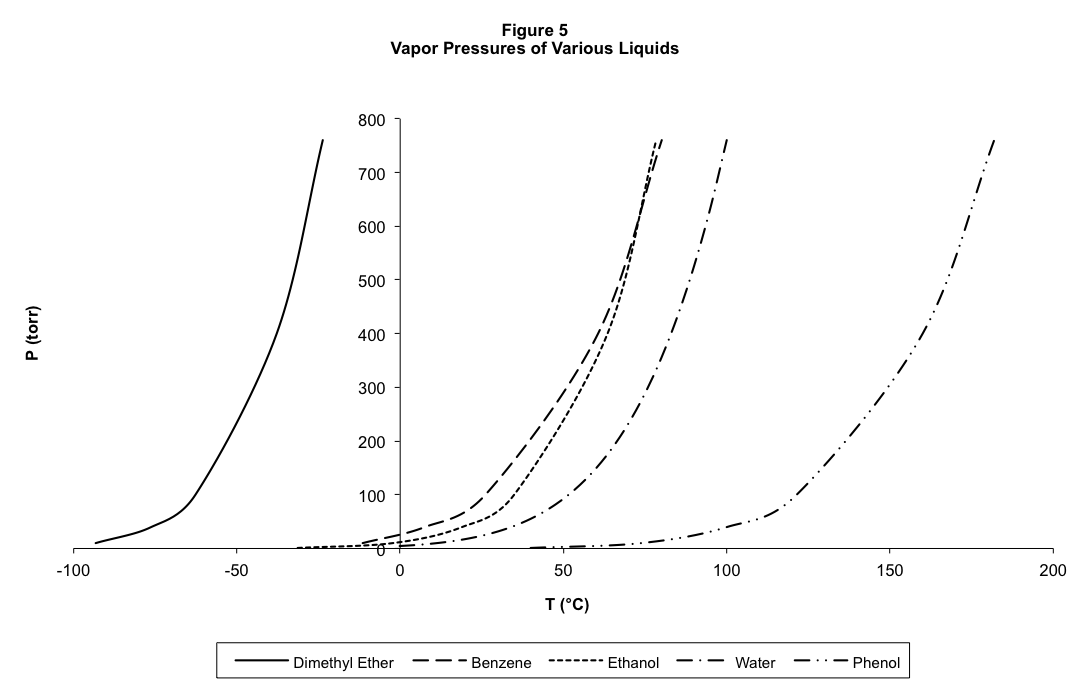| << Chapter < Page | Chapter >> Page > |
The vapor pressures of several liquids at several temperatures are shown in Figure 5. The vapor pressure for each liquid increases smoothly with temperature, although the relationship between vapor pressure and temperature is definitely not proportional.

The data in Figure 5 also clearly show that the vapor pressure depends strongly on what the liquid substance is. As an example, look at the vapor pressures of these five liquids at 50 ºC. The vapor pressure of phenol is tiny, whereas the vapor pressure of dimethyl ether is literally off the chart. The other three liquids have varying vapor pressures in between.
These variations in vapor pressure reflect the differing "volatilities" of the liquids: those with higher vapor pressures are more volatile, which makes sense since the liquid more readily transitions to the gaseous phase. In addition, there is a very interesting correlation between the volatility of a liquid and its boiling point. Without exception, the substances with high boiling points have low vapor pressures and vice versa. We will explore this correlation in detail in the next Concept Development Study.
There are several very interesting questions raised by our observations of phase equilibrium and vapor pressure. The first we will consider is why the vapor pressure at equilibrium with the liquid does not depend on the volume of the container into which the liquid evaporates. Nor does it depend on the amount of liquid in the container. Why do we always get the same pressure at equilibrium for the same temperature, regardless of other conditions? We need to understand how the vapor and liquid coexist in equilibrium. How is this equilibrium achieved?
To approach these questions, let us look again at the experimental set up in Figure 4. We begin with a container with a fixed volume containing some liquid, and equilibrium is achieved at the vapor pressure of the liquid at the fixed temperature given. When we adjust the volume to a larger fixed volume, the pressure automatically and immediately adjusts at equilibrium to exactly the same vapor pressure. This looks like magic. How is this possible?
Since the vapor exerts the same pressure in a larger volume at the same temperature, the Ideal Gas Law tells us that there are more molecules in the vapor after the volume is increased and equilibrium is reestablished. Therefore, more liquid must have evaporated to achieve this equilibrium, since the liquid is the only possible source of these extra molecules in the vapor phase. This leads us to ask how the liquid responded to the increase in overhead volume, since changing the volume presumably only affected the space in which the gas molecules move, not the liquid molecules. How did the liquid “know” to evaporate when the volume increased? We moved the piston, but the piston was not in contact with the liquid. So the molecules in the liquid could not detect the increase in volume for the gas, and thus could not possibly be responding to that increase. Nevertheless, more liquid molecules evaporated after the volume was increased.

Notification Switch
Would you like to follow the 'Concept development studies in chemistry 2013' conversation and receive update notifications?